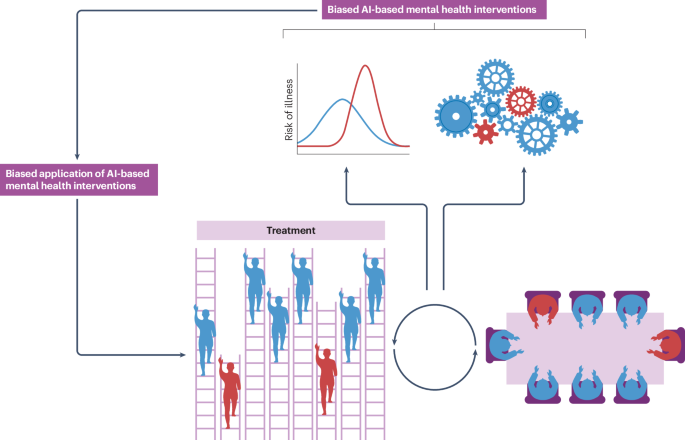How Virginia fell to 48th for youth mental healthcare

STAUNTON, Va. (WHSV) – Mental Health America ranked Virginia 48th out of 51 for overall youth mental healthcare.
In 2022, Mental Health America (MHA) ranked Virginia 21st overall, but after several policy changes and bills introduced to increase access for Virginians, the ranking plummeted to 48th overall.
48th in the United States:
The metric used to rank the states is based on seven topics:
- Youth with at least one major depressive episode (MDE) in the past year
- Youth with substance use disorder in the past year
- Youth with severe MDE
- Youth with MDE who did not receive mental health services
- Youth with severe MDE who received some consistent treatment (7-25 sessions)
- Youth with private insurance that did not cover mental or emotional problems
- Students (K+) identified with emotional disturbance for an individualized education program.
These topics do not cover the entire spectrum of mental health disorders, however, they give organizations like MHA and lawmakers the fuel needed to produce change if needed or continue to provide the same services. Virginia’s plummet had lawmakers concerned, especially after numerous legislations and policies were introduced or enacted to help Virginia curb the mental health crisis in the Commonwealth.
“None of those are numbers to be proud of, and they raise significant concerns with legislators, administrators and I think it’s important to note that it is legislators on both sides of the aisle,” District 35 Delegate Chris Runion said.
Runion said the primary issue for mental health in the Valley and the rest of the commonwealth is not the affordability of mental health services, it’s the number of providers available to give services. In the “Right Help. Right Now.” initiative ordered by Governor Glenn Youngkin, education for mental health specialists is one of the next steps for the commonwealth. According to the Virginia Health and Human Resources website, Youngkin has plans to add a new “behavioral health aide” program at the associate degree level.
“We’re working really hard to provide resources and clearly need to do more,” U.S. Senator Tim Kaine said. ” I want to understand why Virginia changed positions so dramatically in one year.”
Mental health concerns in our youth:
Mental health disorders and concerns are an invisible condition. Unlike the flu or the cold where you can record someone’s temperature or see stuffy/runny noses, people struggling with their mental health can carry a smile on their face whilst fighting never-ending battles behind their eyes.
Youth across America and in the Commonwealth struggle with mental health conditions like depression, anxiety and substance abuse. These issues are diagnosable by professionals, but not by the common person. Organizations like MHA work to bring education to mental health, knock down the stigma related to conversations about mental health issues and help connect people in need to the appropriate resources, whether they are 45 or 15 years old.
“We’re starting to understand that by the age of 14, there are a lot of youth who have already experienced many symptoms of mental health,” MHA of Augusta Executive Director Bruce Blair said. “Unfortunately, at this point, it is typically an 11-year gap between symptoms and treatment.”
The mental health crisis extends farther than throwing money at the issue and hoping for results. Blair said fundamental changes, like the bills in place, will help alleviate the issues for families in the Commonwealth.
Substance abuse is an issue terrorizing many people in the Shenandoah Valley and the rest of Virginia. With the fentanyl crisis worsening, people often are served fentanyl rather than a recreational drug they were expecting to receive from their dealer. Though this issue is often talked about in the adult population, children are not immune to addiction.
“Substance misuse is a growing problem in our community and it doesn’t just impact adults, it affects youth greatly. We are seeing that youth understand that,” Blair said. “We are seeing that youth are crying out for more help on that, and I think that education is important in that.”
How does the Commonwealth bounce back?
The first step for the administration and lawmakers of Virginia/the United States is to identify the shortcomings of the previous year. The MHA website shows some frightening statistics that officials are currently trying to address.
One out of every six children who have private health insurance could not have their emotional or mental health difficulties covered by their insurance. This statistic doesn’t address the amount of children who are without healthcare, but the ones who have coverage for their broken arms or their sprained ankles, cannot receive treatment without all the upfront costs for their disorders. Unlike other ailments, mental health disorders are not fixed from one trip to the doctor’s office. If the next generation struggles with their mental illnesses, it could translate to more issues down the line.
Blair said the solution for mental health issues in Virginia isn’t a one-step process. According to him, it is going to take people from multiple levels of power. However, a clear first step would be improving the programs in schools. By improving the resources available to counselors and administration in schools and increasing the personnel available in schools, students can get the professional care they need much faster than before.
“A lot of it is based on school-based supports and ensuring we have enough workers in the school systems that the school systems have enough support,” Blair said. “So it’s not one counselor on 700 kids, that’s not good for anybody.”
Governor Youngkin’s “Right Help. Right Now.” program does more than provide a new degree program for students to enter the mental healthcare field. It serves as a catalyst and guideline for funding to address issues that plague the Commonwealth. The initiative aims to help fund telehealth in schools. Hiring hundreds of providers and placing them in Virginia is a daunting task, but allowing schools to outsource the support to other parts of the country will give children more immediate access to mental health services.
The culture and community surrounding a child play a major part in their growth and development as they age. Blair said if the community gives up on their youth, the mental health crisis will only get worse from here.
“I think it’s also the community surrounding the schools, surrounding the youth and allowing them to gain access to services whether they have insurance, Medicaid, private insurance or no insurance that’s going to be really important,” Blair said.
Legislation on the way for mental health:
An important step to address mental health concerns is in the Richmond Capitol Building and the U.S. Congress Building. Whether it is the U.S. Senator, the Virginia State Delegate or any other elected official, policy changes and allocated funding are essential to fixing the mental health crisis.
The Bipartisan Safe Communities Act addresses a bunch of needs across the United States. Within the act, mental health resources for adults and children are at the forefront. This legislation would provide hundreds of millions of dollars to the states to help establish strong mental health services and crisis support for anybody who needs them. The legislation also follows suit with Youngkin’s initiative to bring more programs into the schools to help decrease the wait time for students.
Senator Kaine introduced a bill to help create “community schools” across the United States. A community school is a public school with the funding and resources much like a community center would have. Not only is it meant to help develop students in more ways than education, but it’ll also connect students to more concrete and effective mental health resources in the same hallways they learn in.
The Irvo Otieno bill will help people going through a crisis have access to their family members. Parents/relatives will be able to be near a family member who is going through a mental health battle and be there for them when they are in their darkest hours.
What to expect in 2024 and beyond:
WHSV has covered the proposal to create a crisis support center in the Staunton, Augusta and Waynesboro areas. Not only is the SAW area implementing this, but other rural counties and high-need areas are looking to upgrade their current facilities or construct new ones to help.
For youth mental health access, Blair said an important voice is missing from the conversation and needs to be included to help make the best decisions.
“It’s getting the youth at the table, and having youth leadership help form some of these policies and form some of the things that are done in the school systems,” Blair said. “Youth I believe at this point are ready to talk. Youth are pretty open about mental health and pretty open about their concerns, I think more so than ever.”
As more policies and procedures help address the issues in the Shenandoah Valley, WHSV will keep you updated on the fight against the mental health crisis. However, if you or a loved one is going through a mental health crisis, or considering suicide, the 988 suicide prevention hotline is available 24/7. The hotline will connect someone to the appropriate person to help keep them fighting against the internal battles they may face.
Copyright 2024 WHSV. All rights reserved.
link







